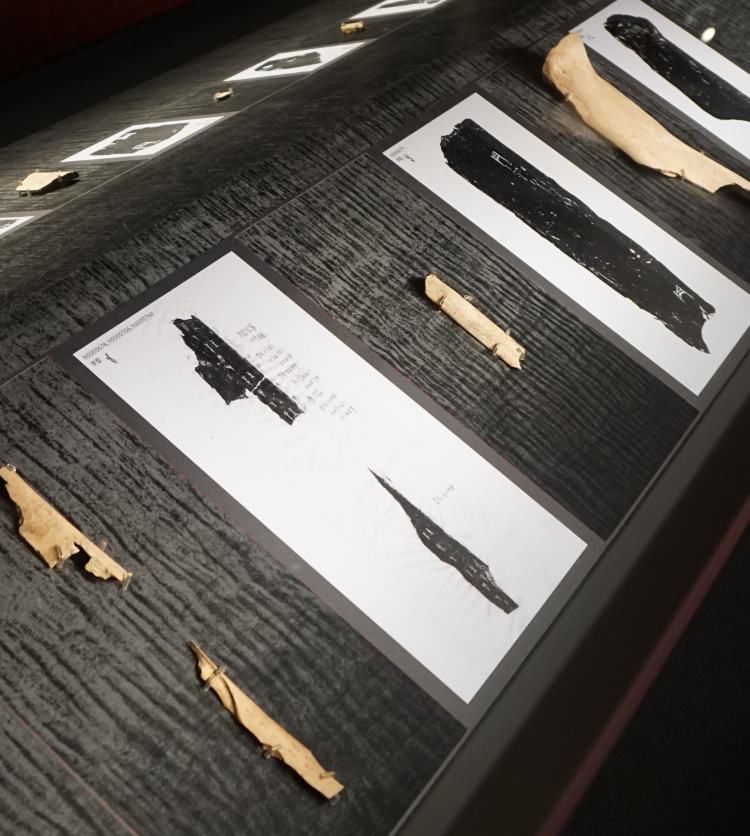These characters carved on the lower side of tortoise shells or the shoulder blades of oxen form one of the earliest human writing systems, which we call oracle bone inscriptions. You are invited to “read” the oracle bones and rubbings in front of you. Can you find any familiar shapes? Like the ancient character that looks like an upper case A with crow feet on top; or the square frame with a short horizontal stroke in the middle and a curved line that looks like a smile; or the lower case r but with left and right as well as top and bottom reversed; or the upside-down upper case Y with three horizontal strokes through it.
All these markings have specific meanings. Starting with the discovery of the Yinxu oracle bones in 1899, scholars have been researching, identifying, and interpreting oracle bone inscriptions in an attempt to gain a deeper understanding of the relation between them and the system of Chinese characters, as well as what society and culture were like 3,500 years ago.
The collection of the National Museum of History counts 3,656 pieces of Yinxu oracle bones. Due to the difficulties of storing and collating oracle bones, few have been taken out over the years for exhibition and research. Starting in 2013, to revitalize the value of the collection, the Museum transferred the entire collection of oracle bones to the Institute of History and Philology at Academia Sinica to collate, where it was found that they contain many unique characters that do not appear within oracle bones which have already been researched. Through continued research and interpretation, we can get a richer understanding of the lives of ancient humans and the development of their societies and cultures.
